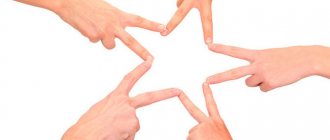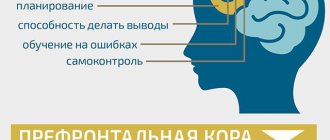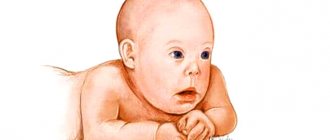There are many directions in modern psychotherapy. Each of them has its own theoretical and practical basis, methods and followers. In this article we will examine in detail the basics of cognitive behavioral therapy - one of the most effective areas today. It originated in the 60s of the last century at the intersection of cognitive psychology and behaviorism. The founder is Aaron Beck, an American psychotherapist and professor of psychiatry. Today, cognitive behavioral therapy is successfully used in the treatment of anxiety disorders, panic attacks, eating disorders, obsessive disorders and other neurotic conditions.
Cognitive therapy
The founder of the cognitive approach is considered to be the American psychotherapist Aaron Beck, who proposed it for the treatment of emotional disorders. The methods of therapy that existed at that time implied that the cause of the disorder lay outside the patient himself, but Beck proposed looking for this cause inside the mind. The cognitive component is based on the belief that a person's psychological problems can be caused by his own thoughts. These can be illogical, irrational judgments and beliefs of a person about something, stereotypes of his thinking, which lead to the impossibility of solving the problem or to its aggravation. During cognitive therapy, the client develops new ways of thinking that are more conducive to a favorable resolution of the situation. In the process of therapy, a person seems to rethink his own thinking. Thanks to the formation of new ways of thinking, the client’s behavior changes; in familiar situations, he begins to act differently, which helps solve problems for which there was previously no way out. Cognitive therapy is based on cognitive models of mental disorders or models of situations in which human behavior is maladaptive or destructive. The work of the psychologist and the client during therapy is to isolate the judgments that form the foundation of the behavior model, and to test their effectiveness, followed by the search for the most appropriate principles of life. Important and characteristic of cognitive therapy is also its content, namely the problems “here and now”, that is, in the process of working with a psychologist, a person solves what bothers him in the present, in contrast, for example, to the psychoanalytic approach, in which the main work associated with the analysis of human childhood. There are four main goals of cognitive psychotherapy:
- Exploring the client's thoughts and feelings;
- Identification of negative, maladaptive thoughts that have become stereotypical;
- Researching arguments that support and refute them;
- Replacing erroneous judgments with more rational and adaptive ones.
Behavioral therapy
J. Wolpe (1958) was probably one of the first psychotherapists to treat obsessive disorders using behavior therapy, in particular, proposing the “thought stopping” method, characterized by direct intervention aimed at reducing obsessive thoughts. This method was a sharp, repeated “subvocal” orders (commands) to stop obsessive thoughts, which the patient gave himself, having previously consciously caused a stream of obsessions. In some cases, the "thought stop" command was accompanied by the use of aversive (disgust-inducing or unpleasant sensations) stimuli, such as a faradic shock, a sudden and sharp sound, or increased pressure on an elastic cuff fixed to the wrists. Further research has shown that the effectiveness of the “thought stop” method depends on a large number of external factors surrounding the patient. P. Salkowskis et D. Westbrook (1989) noted that only 46% of patients with obsessions noted a decrease in obsessive states after behavioral therapy, and only 12% of patients recorded a decrease in the severity of stress caused by the appearance of obsessions.
In the mid-60s of the twentieth century, W. Mayer, conducting behavioral therapy for two patients suffering from obsessions, tried to structure the work of the clinic staff so that the latter would closely monitor the actions of these patients and by all means would keep them from performing obsessive actions. Ultimately, the author suggested that the positive effects of these interventions may have been due to changes in patient behavior.
According to the results of a study assessing the effectiveness of behavioral therapy (behavioral psychotherapy) for obsessive-compulsive disorder conducted by A. Hansen et.al. (1992) its effectiveness depends on several factors: the intensity of obsessive-compulsive disorder symptoms; compliance of the treatment results with the patient’s preliminary expectations; the degree of severity of criticism in relation to the psychotherapist; the nature and strength of anxiety that arises during exposure therapy at home; the influence of the patient’s close environment on the patient’s attitude toward conducting a full course of psychotherapy.
Modern requirements for behavioral therapy imply that it must be well structured and include exposure therapy and psychotherapeutic techniques aimed at preventing the emergence of rituals and relapses of obsessions.
Behavioral therapy is less effective in those patients who lack rituals but have obsessive thoughts.
Modern neuroimaging methods demonstrate a decrease in glucose metabolism in the caudate nucleus with a parallel decrease in the severity of obsessions in the process of behavioral therapy (Schwartz J., et. al., 1996).
Family therapy sessions should be considered an essential element of psychotherapeutic assistance.
In the process of cognitive behavioral therapy, the patient is often required to do a fairly large amount of homework.
Here you often have to overcome the patient’s resistance, because some homework seems too simple and meaningless to him, others too difficult.
Homework that requires strict structuring of free time is especially objectionable.
“Immersion” in risk situations and preventing the emergence of rituals in this case constitutes an essential section of homework aimed at consolidating the results of exposure therapy. Note that the scenario and quality of the subsequent psychotherapy session depend on how successfully the homework was completed. Homework involves independently, without a psychotherapist, “immersing” the patient in those situations in which he usually has obsessions. At the same time, the patient needs to control the stimuli that increase the level of anxiety, evaluate the correctness of his thoughts and emotions, pay attention to the degree of discomfort, the severity of the need to perform this or that ritual.
If the level of anxiety increases sharply, the patient may be advised to move to a similar situation to ensure that he is accustomed to different situations of the same type. This ensures that the patient learns to adapt to many frightening situations beyond the first one he tries to immerse himself in.
If the patient was engaged in imaginary immersion in situations or recorded a ring of obsessive thoughts on a dictaphone, he should be advised to continue working as before, increasing the level of complexity of imaginary scenes or recordings, so as not to stop at the successes achieved.
When conducting behavioral therapy, it is necessary for a doctor to visit the patient at home to monitor the latter’s behavior at home, record and overcome avoidant behavior options.
If the treatment is outpatient, the doctor may conduct several additional sessions at the patients' home. Many psychotherapists consider these sessions simply mandatory.
It is advisable for the doctor to provide the patient with specific information about obsessive-compulsive disorders, give him recommendations and instructions on what should and should not be done at home. For example, the patient may be told that he should make his desk a mess and leave it that way for a while. The implementation of such instructions may be left to the discretion of the patient or family member acting as a co-therapist. The therapist may also ask the patient to keep regular records of what is happening at home or to videotape his rituals, as this information is important for tracking the course of obsessive-compulsive disorders.
Traditional techniques of cognitive behavioral therapy (b behavioral therapy) for obsessive disorders (McGinn L., Sanderson W., 1999)
- Correcting automatic thoughts and rigid judgments
- Monitoring obsessions and rituals
- Exposure (imaginary and in vivo)
- Monitoring exposure procedures
It seems that behavioral therapy is more effective in treating obsessive-compulsive disorders than mental relaxation and hypnotherapy and even cognitive therapy (of course, the latter should preferably be combined with changing the patient's behavior structure), and group behavioral therapy seems to be more effective than group cognitive therapy.
The effects of behavioral therapy usually last for two years.
Rituals are reduced when using psychotherapeutic techniques aimed at preventing a response in combination with exposure to environmental stimuli that increase the severity of obsessive states. Numerous studies confirm the positive effect of behavioral therapy for obsessions in terms of its influence on the normalization of corticostriatal-thalamic connections.
Behavioral therapy techniques used to treat obsessive-compulsive disorder (listed in order of decreasing effectiveness)
- Systematic desensitization (graded exposure therapy) (Foa E., 1980).
- Paradoxical intention (Freidman C., Silvers F., 1977)
- “Stopping Thoughts” (Campbell L., 1973)
- Aversive techniques
- Relaxation (Marks D., 1977).
Behavioral therapy
Methods of behavioral therapy are based on the teachings of conditioned reflexes by Russian scientists V. Bekhterev and I. Pavlov, as well as the research of American psychologists D. B. Watson and B. F. Skinner. Based on these works, the theory of behaviorism was subsequently formed, which suggests that human behavior is largely determined by which model of his behavior is more often reinforced from the outside. The behavioral approach is based on the idea that problems in a person’s life and possible symptoms of mental disorders arise due to incorrectly formed behavioral skills. This means that by changing them, developing useful skills together with a psychologist, you can change the client’s quality of life. Established patterns, that is, models of behavior, also include reactions from the hormonal and autonomic systems, that is, the body of a particular person responds to stress in a certain way. During therapy, a person’s behavior changes when the desired model is reinforced and the unwanted model is not reinforced, as a result of which the person’s emotional reactions change and thinking patterns become more adaptive. This process is carried out according to a specific plan:
- Assessing the client’s initial state and identifying situations in which his behavior is maladaptive;
- Compiling a list of problems and grading them according to severity, importance and degree of emotional impact;
- Gradual replacement of existing behavioral stereotypes with adaptive ones;
- Teaching a person to identify destructive patterns of behavior and cope with them himself.
A behavioral approach, similar to a cognitive one, was used to solve problems and symptoms that bother a person directly at the present moment. In its pure form, behavioral therapy is practically not used to work with adults. At the same time, when working with children, many techniques from the arsenal of behaviorism are used. For example, we can highlight a separate direction in correctional work with special children (autism, ASD, mental retardation and other behavioral characteristics) - ABA - applied behavior analysis. In modern practice, cognitive behavioral therapy is used, which combines the approaches of cognitive and behavioral therapies, which, until a certain stage in the development of psychological science, existed separately. The unification of approaches in the 1980s was facilitated by scientists A. Lazarus, M. Mahoney and D. Meichnbaum. It was they who provided the scientific basis for a new psychotherapeutic direction - cognitive behavioral therapy. CBT combines the methods and techniques of each area and thereby increases the effectiveness of psychological therapy, and also makes it possible to treat a wider range of disorders.
Methods of behavioral psychotherapy
The peculiarity of the referral is that the patient is not treated, but taught. And this helps with the development of an individual training program, thanks to which a person can learn to cope with his problem.
The most commonly used methods are operant conditioning and classical conditioning, which are equally suitable for both humans and animals. Here are the most common techniques:
- Operant conditioning. For a certain action there is a reward, for example, a regular token. It can be exchanged for certain privileges. For example, brush your teeth and get a token. This system is often used in psychiatric hospitals.
- Classical conditioning. A person knows that when a light bulb comes on, he can get an electric shock if he does not remove his hand from it.
- Desensitization. First, the patient is taught to relax. Then they begin to gradually ask about things that cause him anxiety, making a gradual immersion. After this, the stressful situation is associated with muscle relaxation and the person begins to experience much less stress.
- Aversive conditioning. Let's say a person suffers from obesity and overeating. He loves burgers. The doctor gives the patient a burger, but there is simply a device with a battery attached to it, which immediately gives an electric shock when an attempt is made to bite. A simple but effective way.
These are all the main methods that make us consider behavioral psychotherapy as an effective direction for helping to overcome phobias in humans. As a result, he can independently cope with his fears, thanks to the correct behavioral reactions that were pre-established.
Benefits of CBT
The cognitive-behavioral approach to psychological therapy has a number of advantages:
- The effectiveness of therapeutic work, proven using examples of various disorders. For example, according to a study of the use of cognitive therapy methods in the treatment of migraine, the effectiveness was 68%.
- Relative short-term therapy. Work in the cognitive-behavioral approach lasts 10-20 sessions.
- The foundation is in the form of a scientific base. The approach is based on specific scientific concepts of various sciences: cognitive psychology, psychophysiology, neurobiology, etc.
- Clear structure of therapy. The therapy plan is discussed with the client, work is carried out according to it and remains clear to the client.
- Therapy has specific goals. The goals and objectives of therapy are discussed by the psychologist and the client at the beginning of therapy, the work is aimed at the most interesting areas of a person’s life at the moment.
- The psychologist becomes a partner for the client; in therapy, he proceeds from his interests, taking into account his opinion.
- Absence of irrational components. Therapy is based on specifically existing problems and judgments, without affecting the worldview and religious sphere.
- This paradigm is one of the few recognized at the level of insurance companies abroad (that is, the costs of psychotherapy in some cases are covered by health insurance).
Behavioral psychotherapy techniques
It is also worth mentioning some individual behavioral psychotherapy techniques that are widely applicable in our time. They also differ in many ways from each other, not only in approach and general form, but also in effectiveness, relevance to a particular psychological problem and, of course, complexity in their implementation.
There is, for example, the so-called “flooding” technique. By and large, this is one of many techniques in psychiatry, which is based on the ability of the human consciousness and psyche to sensitize and desensitize. Simply put, the “flood” technique is based on the phenomenon that with more or less prolonged reproduction of a certain traumatic situation, a kind of inhibition develops in the consciousness and psyche of the individual, and sensitivity to these conditions sharply decreases.
Thus, during the sessions, the patient faces his fear for quite a long time, and even remains in a state of fear until the very feeling of fear begins to dull. Of course, in our time, quite a lot of variations of this technique have been developed, from a banal story to deep suggestion and creating the illusion of a traumatic situation. Of course, it is worth understanding that such serious influences on the psyche cannot always pass without a trace, therefore some of the options for such treatment, for example, “illusion,” are very rarely used in practice.
For what diagnoses is cognitive behavioral therapy indicated?
CBT is the treatment of choice for many mental disorders. These include anxiety disorders, schizophrenia, some types of depression, eating disorders, addictions, obsessive-compulsive disorder, phobias, sleep disorders, antisocial behavior, etc. In addition, cognitive behavioral therapy can be used in the treatment of chronic somatic or psychosomatic diseases such as hypertension, asthma.
Examples of CBT exercises
Cognitive techniques are divided into several groups. The exercises of the first group are aimed at identifying negative attitudes. For example, keeping a diary of thoughts and then evaluating them. The exercises of the second group are aimed at challenging the identified attitudes. For example, a person might make a list of the pros and cons of a particular attitude. The exercises of the third group are aimed at correcting ideas. For example, by repeating a positive attitude it is possible to weaken the influence of a provoking factor and eliminate a maladaptive stereotype. Exercises of the fourth group are aimed at increasing the effectiveness of therapy, for example, identifying hidden motives for destructive behavior.
To schedule a consultation with a specialist, call or fill out the application form on the website.
You can also contact us using instant messengers:
WhatsApp









